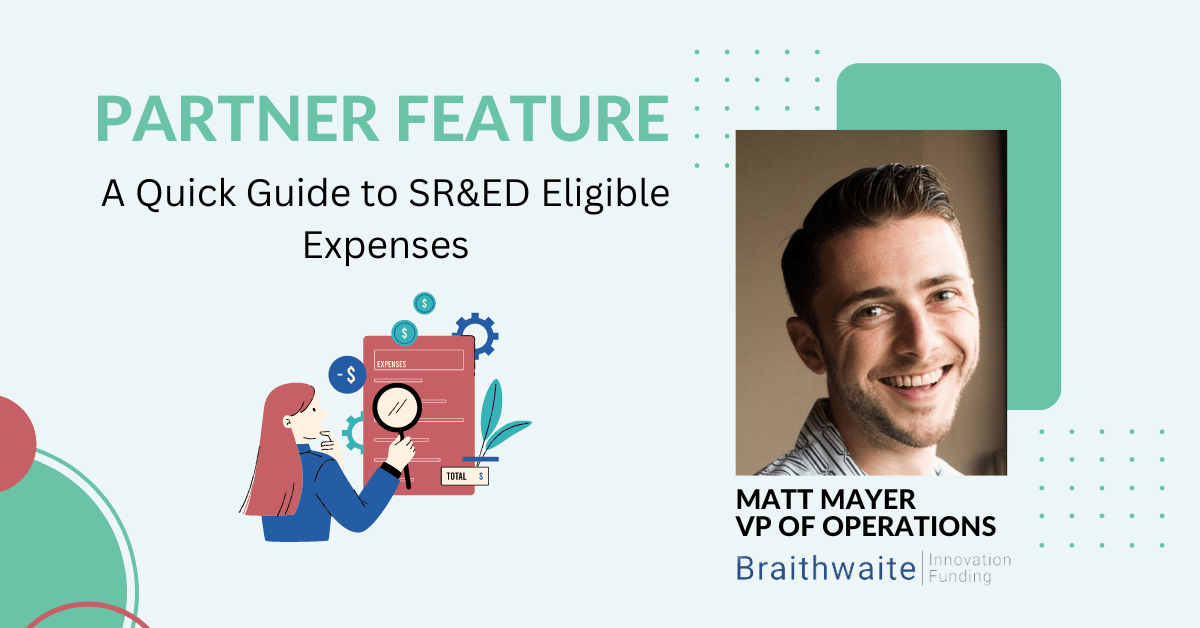Having access to funding is a lifeline for businesses. For companies engaged in scientific research and experimental development, this funding becomes even more critical, as R&D is often a costly endeavour. The Scientific Research and Experimental Development (SR&ED) program is the Canadian Government’s largest source of financial support for companies engaged in R&D activities. SR&ED provides over $3 billion in tax credits provided to more than 20,000 claimants annually.
To make the most of SR&ED, it’s essential to know the common pitfalls that often place businesses behind and occasionally result in CRA reviews (which can delay the arrival of your refund by months).
Here are some of the most prevalent errors and oversights that could hold you back from claiming valuable SR&ED credits. Read on to learn more:
Inflated and False Claims
One surefire way to have your SR&ED claim denied (and to risk further attention from the CRA) is to submit claims that are overstated or falsified. While errors can occur given the complexity of SR&ED reporting (and will not be penalized), those who knowingly violate the rules may incur a fine and/or risk a delay of funding due to an audit.
Fines may be issued for any of the following:
- Overstatement of claims
- Attempting to include expenditures that are not eligible
- Claiming business activities and expenditures as SR&ED-eligible
In the instances above, claimants would typically need to knowingly falsify or deliberately overstate their claim to receive a fine. Even small incremental improvements, failed experiments, or tweaks on existing workflows can qualify you for SR&ED funding – so long as you are honest about what you’re doing.
Note that should you incur a penalty that you feel is unwarranted, you are able to submit an appeal. Doing so, however, will likely delay your funds further. To avoid this pain point altogether, ensure that you are aware of what is and isn’t eligible and structure your claim accordingly.
Failing to Address Written CRA Notices
As we mentioned above, filing errors aren’t uncommon with SR&ED claims. They go into detail on the technical aspects of the project and the communication of the results, which leaves plenty of room for the CRA to either agree or disagree. When the CRA determines that an error has occurred, it will typically provide your company with written notice of what needs to be corrected. Failure to address CRA notices in a timely manner is highly inadvisable. Upon receiving a request for more information or revision, contact the CRA as quickly as possible to find a resolution, and work with your accounting team or external consultant to address any outstanding errors.
Should you fail to address notices and continue to attempt to claim unsubstantiated expenses, you risk incurring a fine or penalty – similar to how you would if you had deliberately overstated or falsified your claim.
Not Documenting Additional Sources of Funding Correctly
R&D efforts are costly, and it is rare that businesses will rely on the support of only one external source to pursue their objective. Many companies receive funding from numerous sources, including governmental agencies and private entities. Your SR&ED refund, however, is influenced by the qualified expenditure pool of all of your company’s eligible expenses accrued on SR&ED work. It is essential to meticulously document and disclose any R&D-related grants or sources of funding to avoid accidentally over-inflating your claim.
Tax Form Errors
Finally, another common culprit for issues when filing is errors when filling out Form T661. Form T661 is complex, and errors in this section can cause significant issues with your SR&ED claim.
In order to fill out Form T661 as accurately as possible, the following must be provided:
- The preparer’s full and accurate name or business name (this refers to anyone external to your company who assists in completing the form)
- The preparer’s Business Number (BN) or HST/GST Number
- Relevant billing codes for their services (billing codes can be found within Form T661)
- How much each preparer is paid, as well as the overall total provided if you engaged multiple parties.
- The name of an authorized individual to sign and verify the information, as well as a signature/BN, tax year-end, and web access code (if filed electronically).
How To Avoid Costly Errors
While the SR&ED program is highly beneficial for Canadian businesses, filing is a complex process that requires your full attention and understanding. For many engaged in active R&D activities, it may be difficult to find the time to fully dedicate your focus to SR&ED paperwork, at which point it is advisable to partner with an external consultant who can guide you through the process and ensure your documentation is as refined as possible. Given the hefty penalties associated with making false or misleading SR&ED claims, it is often worth the cost of consulting an expert before you claim.
Financing your SR&ED Credits
At Venbridge, we’re proud to offer founder-friendly, non-dilutive capital that empowers Canadian innovators to achieve their objectives with minimal downtime or interruptions. By partnering with Venbridge, you can begin funding your growth on your schedule!
Learn how partnering with Venbridge can enhance your R&D initiatives and assist your business through SR&ED financing by contacting our team today!




